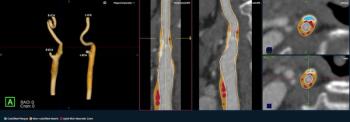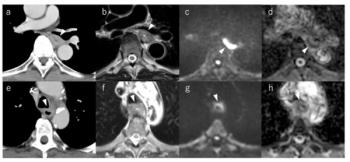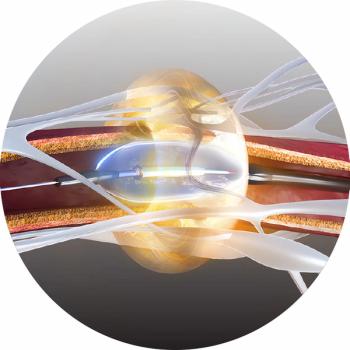
PACS administration: Enter the application specialist
This is the second in a series of articles exploring the multiple roles of PACS administration. In the first article, I introduced a competency model used in the information technology world (http://www.dimag.com/pacsweb/stories/feature12120201.shtml).
This is the second in a series of articles exploring the multiple roles of PACS administration. In the first article, I introduced a competency model used in the information technology world (http://www.dimag.com/pacsweb/stories/feature12120201.shtml). The staffing model breaks competencies into technical, behaviorial, and business attributes. PACS administration tasks fall into each of these categories. While individuals might need to accomplish tasks from all three competencies, they are typically most comfortable with one. This article will dive into the behaviorial competency category: who this person is, what he or she does, and where this person usually can be found.
Behaviorial competencies involve working with and understanding users. This role is called an application specialist. The application specialist works side by side with users, training them on the system and helping them get the most out of it. The users of a PACS are radiologists, clinicians, and technologists. An ideal application specialist is a head technologist looking for career growth. A technologist understands the workflow of the department and knows how to build a good rapport with fellow technologists and radiologists.
Four different types of roles should be the primary responsibility of the application specialist: training, workflow engineering, reading room design, and customer relations management.
TRAINING
Training is a fundamental ingredient to the successful implementation of an information system. The application specialist should be able to organize and lead training programs.
Training is an ongoing process, as staff are continuously rotating through. Training is also not a one-shot event, but a regular process. The field of PACS is constantly evolving with new features and functionality. A solid training program will provide dividends in ongoing support costs and user satisfaction. A vendor can provide training at the time of installation, but it is unlikely that the vendor will provide training to the large number of enterprise users on a continual basis.
WORKFLOW ENGINEERING
A well-integrated PACS has the potential to eliminate many non-value-added steps that limit productivity for technologists, but it is up to the application specialist to ensure that that potential is realized. This requires someone who can relate to technologists working in the trenches and can understand why and where the systems take too much manual intervention and a Sneakernet to move patient data from system A to system B.
A study done at the VA Maryland Health Care System by Dr. Eliot Siegel and Dr. Bruce Reiner identified 60 steps necessary to process a straightforward radiological procedure. With a focus on workflow and integration, they were able to reduce that number to 11. Reducing non-value-added steps minimizes the potential for errors and increases the productivity of the department.1
READING ROOM DESIGN
An often-cited goal for PACS is increased radiologist productivity. Ergonomic and usability analysis of the reading room has a direct impact on this goal. The process takes into account environmental factors such as ambient lighting, noise, and temperature. There is a trade-off in reading room design between making a radiologist accessible for consultation and at the same time insulated to preserve productivity. The person best equipped to work with the radiologists and understand their reading preferences is the application specialist.
CUSTOMER RELATIONS MANAGEMENT
Your application specialist is best suited to handle the two psychological aspects to implementing a PACS. The first is change management. Film has been around as long as radiology, and getting rid of it will invariably cause stress. PACS represents a lot of change, and there is always some degree of risk and fear associated with that.2,3 The application specialist should understand change management and be able to interact with the users to alleviate concern. An application specialist will know how the change will impact the users and be able to explain this impact to them.
The second aspect to customer relations management is understanding just how technophobic some users are. Symnatec did a study that found 70% of users experienced difficulties with computers. Symptoms included swearing at the computer, loss of productivity, and emotional distress.4 Twenty percent of users suffer from "PC rage," which sometimes involved a physical assault on and damage of a computer. Having someone on your team who can relate to users and help them can be invaluable.
"This is a great opportunity for technologists looking for advancement," said Thomas Hanson, M.S., R.T., an application specialist at Froedtert Memorial Lutheran Hospital. "When users call needing support, it really helps to speak their language to understand the problem and not inundate them with computer jargon. It also helps because you can better understand how it impacts them and respond appropriately."
REFERENCES
? Dreyer K, Mehta A, Thrall J. PACS: a guide to the digital revolution. Chapter 7: Image workflow. NY: Springer-Verlag 2002.
? Treister N. Physician acceptance of new medical information systems: the field of dreams. CIO Magazine 1999 http://www.cio.com/research/healthcare/field_of_dreams.html.
? Reiner B, Siegel E. Psychological factors affecting the adoption of PACS. Applied Radiol 2002;31(4) http://www.appliedradiology.com/articles/article.asp?Id=618.
? "Do you suffer from PC rage?" http://www.pcrage.co.za/uk_findings2.htm
Newsletter
Stay at the forefront of radiology with the Diagnostic Imaging newsletter, delivering the latest news, clinical insights, and imaging advancements for today’s radiologists.

































